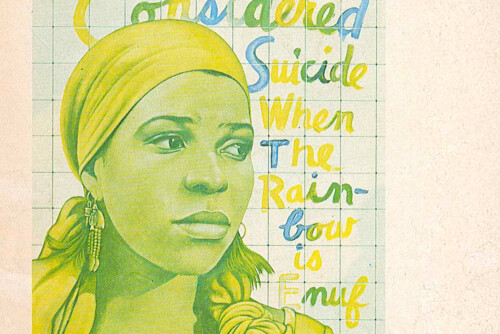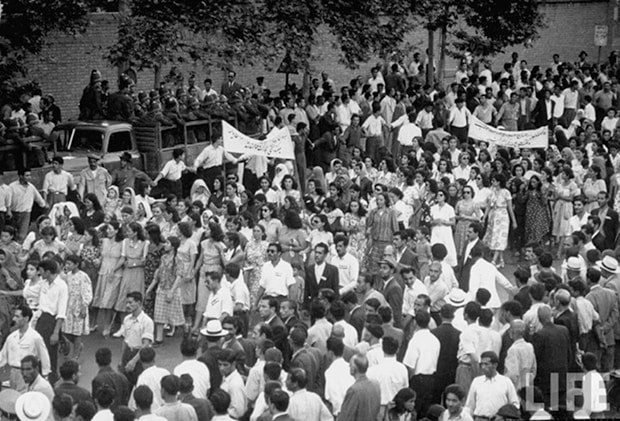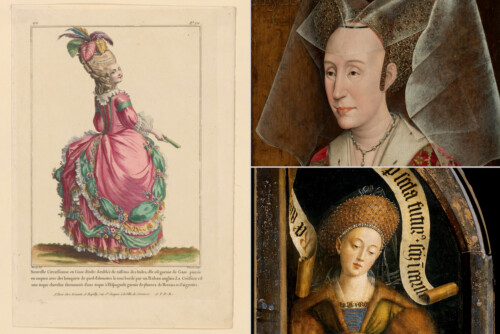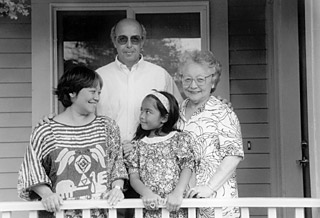What follows is a purely subjective analysis.
The primer of my title refers to several meanings of the word:
- A prayer book or devotional manual for the use of lay people.
- A book that covers the basic elements of a subject.
For over three decades, Ntozake Shange’s writing has been a source of pleasure and insight as well as the subject of theoretical, historical, and cultural musings. In all of these instances, it has also served as a kind of primer that introduces readers to contemporary music, art, dance, and culinary practices. It also provides a context and a set of aesthetic principals for appreciating them. Furthermore, if the content of her work engages these art forms, the form of her written work does so as well. Her words dance, sing, and construct visual design on the page. This paper will focus primarily on music because this has been the subject of much of my research of late, but what is said here holds true for Shange’s literary relationship to dance and the visual and culinary arts as well. Her meditations on and representations of black art and its production yield exciting and beautiful insights:
- That black art is cosmopolitan. That cosmopolitan doesn’t have to mean a denial of black identity or a distancing from it…but instead a broadening of our understanding of what constitutes black art.
- That art is necessary for personal and collective survival.
- Art, especially black art, is a source of historical, political and spiritual sustenance.
I will play Oliver Lake loud
for colored girls
for colored girls probably introduced a number of readers and spectators to Oliver Lake: “I will play Oliver Lake loud,” says the lady in blue in Shange’s 1975 choreopoem, for colored girls who have considered suicide / when the rainbow is enuf. “I will play Oliver Lake loud” stands out as a one of the poem’s statements of defiance, second only to “I found god in myself and I loved her, I loved her fiercely.” Many must have wondered, who is this Oliver Lake? What does his music sound like? Why does it make the lady in blue so assertive, so defiant? Other musical figures populate for colored girls: Willie Colon, Archie Shepp, Eddie Palmeri, Charles Mingus. The club Slugs even makes an appearance—lady in blue, disappointed that Willie Colon is not performing, instead discovers Archie Shepp:
& if jesus cdnt play a horn like shepp
waznt no need for colored folks to bear no cross at all.1
Along with Jayne Cortez, Toni Cade Bambara, and others, Shange introduced black women into literature who were creative, multilingual, bohemian, literate, hip to avant-garde jazz and Latin music, and political. These were women whose work emerged from the encounter of the Black Arts Movement with feminism. The new music—post-Coltrane free jazz—was central to the rhythms, sounds, and settings of the work they produced. References to music (especially jazz) appear throughout the poems; jazz musicians, literal and fictional, appear as characters. In Shange’s work, music is everywhere. The language of her poetry and prose is itself musical; she is always attentive to sound.
As with Bambara, Alison Mills, and Sherley Ann Williams, Shange creates women characters who are involved with jazz musicians.2 In addition, throughout her career, Shange has frequently performed with musicians: Oliver Lake is a frequent collaborator, as is David Murray with whom she recently recorded Wild Flower. In this collaboration, Murray, Shange’s former husband, improvises on tenor sax and bass clarinet to accompany her reading of her poetry. Both Lake and Murray were founding members of The World Saxophone Quartet.
Though she is most often spoken of as part of a multicultural group of artists and feminists from the Bay area (where for colored girls was first developed), Shange’s experience on the New York scene was especially influential. For a time, she lived with other artists on the Lower East Side, and when she returned from the West Coast in the 1970s she became part of the loft scene. Producer, director, and choreographer Aku Kadogo, who was part of the original cast of for colored girls, recalled: “When I met Ntozake, it was Ntozake, Paula [Moss], myself and a woman called Kirstin. And I was actually working as a dancer with Ntozake. So we did a lot of improvisation. We would go to bars. Ntozake would read, and we would dance. And the musicians would join in and play with us. So I’ve spent a lot of time talking about the music scene and being in the music scene. The loft scene was coming. The Art Ensemble of Chicago was there. David Murray had just come to town. There was so much going on.”3
Shange was part of a generation of avant-garde black artists who were pushing boundaries and creating new vocabularies and communities. This scene was a generative one and it is both source and setting for much of her work. Like Bambara and Williams, who are both a bit older than she is, Shange addresses the peculiar bind some black women found themselves in during the Black Power and Black Arts Movements, particularly those who were part of artistic communities. They confronted images of black women as materialistic, bourgeois, and unwilling to support the artistic aspirations of black men,4 while at the same time they struggled against the pressure to accept black male patriarchy. In contrast, Shange and other artists gave us black women characters who were appreciative of and concerned about music, women who frequented jazz clubs as supporters of the music, if not lovers of the musicians. They all seemed primarily concerned with what Hortense Spillers calls the “intramural” relations between black people—mothers and daughters, men and women, and women friends.5 While first readings reveal the gender conflict represented by the women writers of the seventies, interestingly, jazz is often (but not always) the common place, the meeting ground, the space of genuine communication between black men and women. And while the male musician speaks in tongues, it is the woman writer who has the gift of interpretation.
In her first novel, Sassafrass, Cypress and Indigo (1982), Shange presents women who are not only the lovers or wives of jazz musicians, but who are also artists in their own right: Sassafrass, the weaver, live-in lover of Mitch, an avant-guard saxophonist and heroin addict; and her sister Cypress, a dancer who marries the very successful musician/composer Leroy McCullough, whose “horns” and “arms” had “offered her horizons where she was free to see what she chose, feel what she had to, be what she dreamed.”6 Here the musician/dancer, male/female artist relationship is not one of rivalry, jealousy, or insecurity. Instead it is one that enables Cypress’ own creative journey and risk-taking. But for our purposes, it is the baby sister, Indigo, who serves as the representative of Shange’s understandings of music and its spiritual and political implications. Through Indigo, Shange posits a theory of black music, indeed, of black art—one that is clearly informed by the Black Aesthetic, but as is the case with much of Shange’s work, in Indigo, the Black Aesthetic (Cultural Nationalism) meets feminism: her priest-like musician is female, not a woman, but a girl. If for colored girls opens with the plea that the poet “Sing a Black girl’s song,” Indigo plays her own song, and in doing so, she also plays the songs of her ancestors, while creating a pathway for the yet-to-be-born who, as a midwife, she will later usher into this world.
- Ntozake Shange for colored girls (New York: Scribner, 2010 [1975]) 27. [↩]
- Shange married David Murray in 1977, the same year he cofounded the World Saxophone Quartet with Oliver Lake, Hamiet Bluett, and Julius Hemphill. [↩]
- Khari Kimani Turner, “Rainbows for the City” San Francisco Chronicle 23 Jan. 2002. [↩]
- See Val Wilmer, As Serious As Your Life: The Story of the New Jazz (London: Alisson and Busby, 1977). [↩]
- See Hortense Spillers, Back, White and in Color: Essays on American Literature and Culture (Chicago: U of Chicago P, 2003) 377. [↩]
- Ntozake Shange, Sassafrass, Cypress & Indigo: A Novel (New York: St. Martin’s, 1982). Harryette Mullen suggests that Murray is the model for McCullough. See Harryette Romell Mullen, “’Artistic Expression was Flowing Everywhere’: Alison Mills and Ntozake Shange, Black Bohemian Feminists in the 1970s,” Meridians: feminism, race, transnationalism 4.2 (2004): 205-235. [↩]




